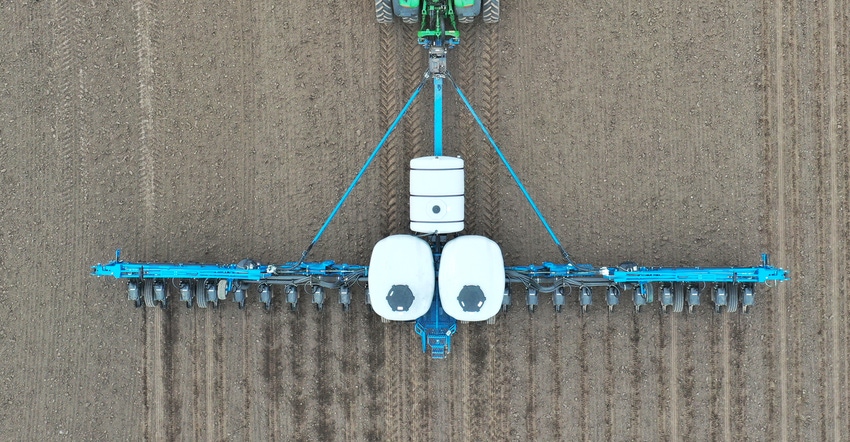
As another page on the calendar turns over, thoughts of warm sun and fragrant soil lead to one conclusion: Make sure that planting equipment is ready to roll in fields this spring.
Brad Niensteadt, Kinze Manufacturing lead product specialist, offers these nine tips for planter maintenance. All are applicable to conventional, no-till, strip-till and minimum-till planting.
1. Tighten it up. Thoroughly inspect for loose hardware, especially parallel arm bolts; transport and field wheel bolts; and center post-bearing casting bolts (on pivot-fold planters).
2. Make safety first priority. Ensure safety devices are properly working. Check that the safety chain is properly installed, safety lights work when connected to the tractor, and the “slow-moving vehicle” sign is attached, clean and visible.
3. Measure and adjust. Check over row units and attachments, including the disk opener blade measurement (replace if diameter is 14½ inches or less); the no-till coulter adjustment and measurement (replace if diameter is 14½ inches or less); closing wheel bearings’ alignment and condition; and gauge-wheel adjustment and wear.
4. Lubricate for smooth movement. Check driveline bearings and chains, replacing as necessary. Chains should be lubricated and turn freely. Bearing hangers should turn smoothly and not be rough.
5. Grease or replace. Grease the entire machine, and replace fittings not accepting grease.
6. Check for consistent seed placement. Inspect seed meters to make sure they will properly singulate seed and deliver consistent spacing between seeds for optimal emergence. Both mechanical and vacuum seed meters should be removed from the planter and cleaned out when not in use.
7. Ensure hitch height is level. Make sure hitch height is adjusted correctly to keep the planter tongue level.
8. Inspect nutrient delivery. Check over the fertilizer system, making sure fertilizer pumps are completely cleaned out after their last use. Flush the system with fresh water to make sure there are no leaks or delivery issues.
9. Refresh knowledge of planter electronics. Thoroughly examine the planter display and related electronics. Review the latest software releases from your planter manufacturer to ensure all displays and controllers are operating with the latest versions of software. Clean up and add or delete data in your display to ensure you are using the current and most up-to-date field and hybrid information for the current crop year.
About the Author(s)
You May Also Like






